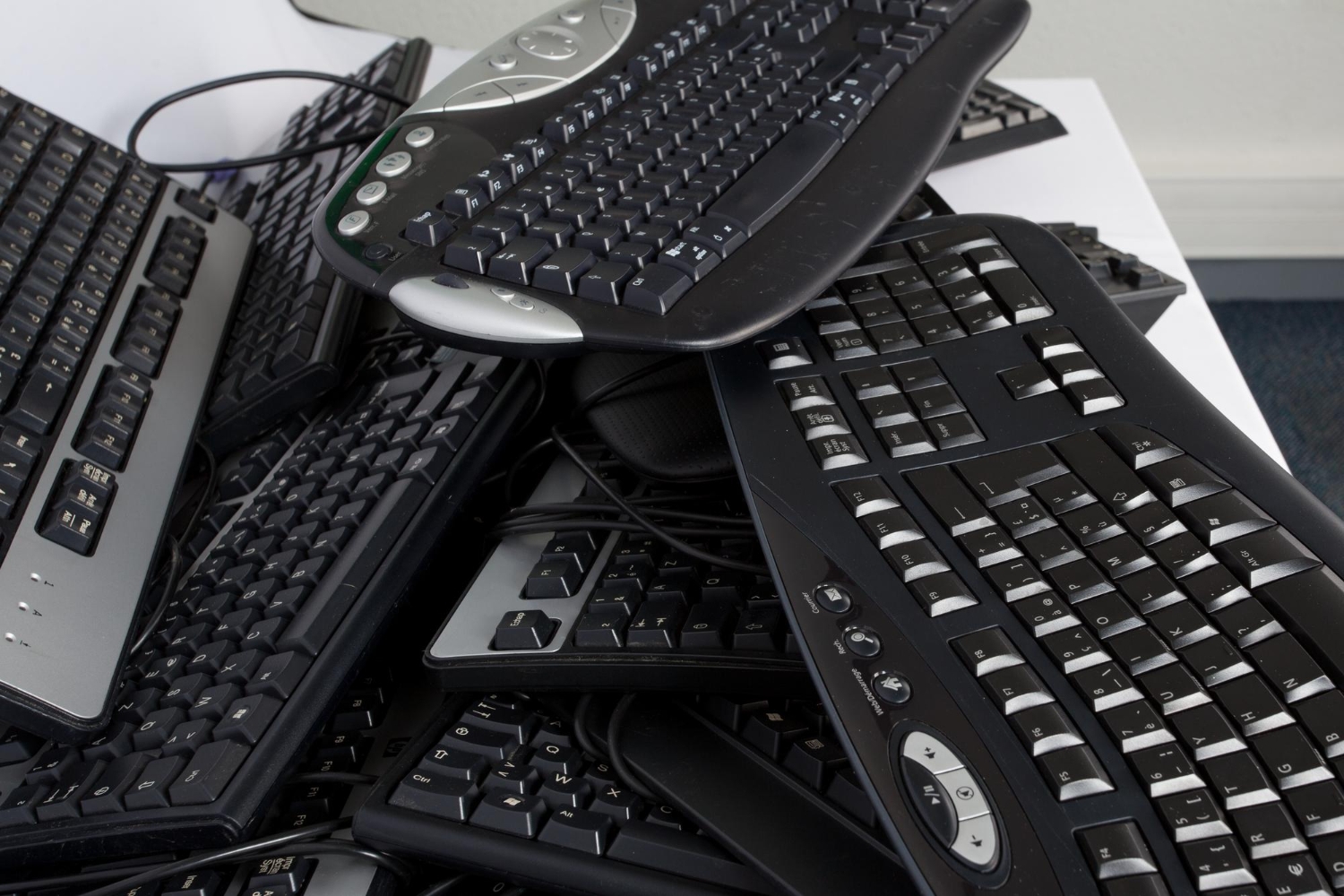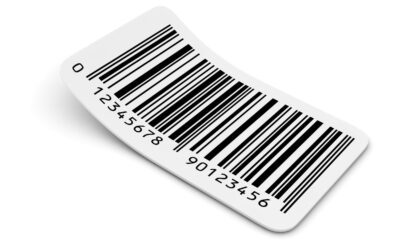When managing your business’s resources, it’s crucial to know the difference between fixed assets and inventory. In short, your inventory is consumables or stock, whereas your assets are the things you physically use day-to-day.
As such, having a system for either helps you track and manage different things. An inventory management system will help you keep track of inventory levels, and a fixed asset register software will help you monitor asset locations and use.
Fixed Assets: The Backbone of Your Business
Things that are fixed in value are what keep your business running every day. Think about your office chairs, computers, tools, or even the delivery van that’s parked outside. You don’t plan to sell these things; they’re just tools that help you do your job.
Now think about what would happen if you didn’t keep track of these things correctly. You might buy a new laptop that has been unused in a closet for a while, or you might forget that an important machine needs to be serviced. That’s why a fixed asset record is useful. You always know what you own, where it is, and how well it’s working.
It’s not enough to just know what you have, though. Fixed assets typically lose value over time as they are used. Keeping track of this helps you better handle your money and make plans for when to replace things in the future. Also, this keeps you from being surprised when it’s time to file your taxes, since depreciation changes how you report your income.
To stay on top of your resources and avoid unnecessary losses, it’s essential to prepare a fixed asset register that captures key details like location, usage, and maintenance.
To put it simply, fixed assets keep your business running. If you treat them well, they’ll keep things running smoothly.

Inventory: The Ever-Changing Flow of Goods
When it comes to inventory, things are very different. These are the things you run a business on or consume. Consider it as the lifeblood keeping your company running—raw materials, completed goods, even office supplies like paper and pens.
Inventory doesn’t remain around for very long, unlike fixed assets. It flows in and goes out and is traded regularly. Tracking is more about knowing your numbers than about knowing the precise location of every single object. You should be aware of your stock level, which is selling quickly and which is gathering dust on the shelf.
Imagine yourself running a retail store and then discovering you have run out of a top item. Worst still, you have boxes of out-of-date merchandise occupying precious space. Good inventory control provides a comprehensive insight into your supply levels and trends, thereby helping you to prevent these situations.
Good inventory control helps you to estimate demand more accurately, prevent stockouts, and maintain customer satisfaction. It’s about being proactive instead of reactive, which eventually saves money and time.
Inventory vs Asset: Why Mixing Them Up Can Be Costly
You’d be surprised how often businesses blur the lines between inventory vs asset. At first glance, some items can appear to fit both categories. Take a delivery van, for example. The vehicle itself is a fixed asset, but the goods it transports are inventory. Similarly, a box of tablets might be considered inventory, but if those tablets are assigned to employees for work, they’re treated as assets.
Mixing up the two can lead to serious financial headaches. Misclassifying assets as inventory—or vice versa—can mess up your books, cause incorrect depreciation records, and even lead to issues with tax compliance. Not to mention, it can impact cash flow. Imagine thinking you’ve got more stock than you actually do, only to realise you’ve been making purchases you didn’t need.
So, why keep them separate? It’s all about the level of detail you need. Fixed assets require more granular tracking. You want to know where each laptop is, who’s using it, and whether it’s due for maintenance. With inventory, you’re looking at broader trends—how much stock you have, how fast it’s moving, and where it’s going.
Getting this distinction right means fewer headaches down the line and more confidence in your financial reporting.
The Financial Risks of Misclassifying Assets and Inventory
Misclassifying items isn’t just a technical error—it can have real financial consequences. For instance, if you mistakenly record inventory as a fixed asset, you’ll end up calculating depreciation for something that doesn’t need it. Over time, this can skew your financial reports, making it harder to understand your actual costs and profits.
Then there’s the issue of taxes. Fixed assets are subject to tax rules that are different from those of inventory. If you’ve got your classifications wrong, you could be filing inaccurate tax returns, leading to penalties or audits. Nobody wants that kind of stress.
Cash flow is another area where things can go wrong. Let’s say you think you’ve got plenty of stock, so you don’t reorder. But in reality, what you’ve got on hand is mostly fixed assets, not sellable goods. Before you know it, you’re facing a supply shortage and scrambling to restock.
Taking the time to distinguish between assets and inventory might seem tedious, but it’s worth it. By ensuring you create an asset register that accurately distinguishes between fixed assets and inventory, you reduce the risk of financial errors and improve compliance.
The Financial Risks of Misclassifying Assets and Inventory
While it’s essential to track fixed assets and inventory separately, a case needs to be made for integrating the two systems. After all, some items straddle both categories.
Let’s say you run a warehouse. You’ve got tools that your team uses daily, but you also lend these tools out to customers. These tools are both part of your fixed assets and your inventory. Having an integrated system means you can track them from both perspectives—knowing who’s using them internally and who’s borrowing them externally.
Another example is IT equipment. Laptops might be inventory when purchased in bulk, but once they’re assigned to employees, they become fixed assets. An integrated system helps you manage these transitions seamlessly.
The key is to choose a system that offers flexibility. You don’t want to be stuck using two separate platforms that don’t communicate with each other. An integrated system helps you monitor asset utilisation in real-time, ensuring that all tools and equipment are being used efficiently and are not sitting idle.
So, let us look at these systems closer and find out how they can serve you and your business.
Fixed Asset Register Software
Fixed asset register software allows you to log all of your assets into a digital system. What is a fixed asset? An asset that can’t be easily converted into cash.
So, your fixed assets are furniture, laptops, tools, equipment, and other assets that are used in the day-to-day running of your business, not the assets that you sell.
Why do you need to track fixed assets? When you track your fixed assets, you can monitor how they depreciate and avoid common risks, such as asset loss, duplicate purchases or ghost and zombie assets on your asset register.
Having a fixed asset register allows you to customise reports on your asset data and export this, giving you everything you need to know about your assets.
Inventory Management Software
Inventory management software is a system whereby you can monitor your stock levels and consumables. Inventory is not a permanent fixture in your business like furniture or laptops are, and so needs to be tracked differently.
When you’re tracking your inventory, there may be some overlap with what you track on a fixed asset register. For example, you’ll need to know the locations of your stock so that you can monitor a workflow.
However, with inventory management software you’ll be tracking numbers and trends more than specific asset data such as “twenty of this to that warehouse”.
In turn, this kind of tracking gives you more visibility over your business’s supply chain and helps you foresee and mitigate potential disruptions in service.
The Key Differences
The main difference, therefore, is the granularity of data. A fixed asset register lets you track asset data on an asset’s level. So, you’ll know the ownership details of that asset, where it is, and if it’s well maintained.
On the other hand, inventory management software lets you track a group of assets without that granularity. So, instead of seeing pinpoint asset data such as which of your assets is damaged, you’ll see where a group of your assets have come from, in bulk, with ease.
Traditionally, these two systems are kept separate as they do very, very different things. Fixed asset tracking software would require significant scaling up to show trends of thousands upon thousands of assets when the fact of the matter is that this granularity isn’t needed for inventory. However, some functionality still overlaps between systems.
itemit’s Fixed Asset Management Software
itemit’s fixed asset management software lets you monitor, track and manage your fixed assets. With itemit, you get more visibility over how your assets are behaving, who has them and where they are.
itemit does have inventory management features integrated into it, too, but the system is best used for asset management first with elements of inventory second.
The features in the system allow you to add, track and monitor any asset data. Then, you can export customised reports of this information.
To find out more about how itemit’s fixed asset register software can help your business, you can contact the team at team@itemit.com. You can also fill in the form below to start your very own 14-day free trial.

Try itemit
Choose a better way to track
your assets.
Start your free 14-day trial now!

Keep Learning
itemit Blog
Tips, guides, industry best practices, and news.
What Is Active RFID? A Complete Guide to Smart RFID Tags
Discover what Active RFID is, how active tags function, and the key benefits and use cases that make this technology essential for modern tracking systems.
Everything You Need to Know About 2D Barcodes
Discover everything about 2D barcodes, including how they work, their benefits, and how they are revolutionizing industries and improving business operations
Complete Guide to Asset Lifecycle Management and Its Benefits
Learn about asset lifecycle management and how it helps businesses optimize asset usage, reduce costs, and improve efficiency throughout the asset’s life.



